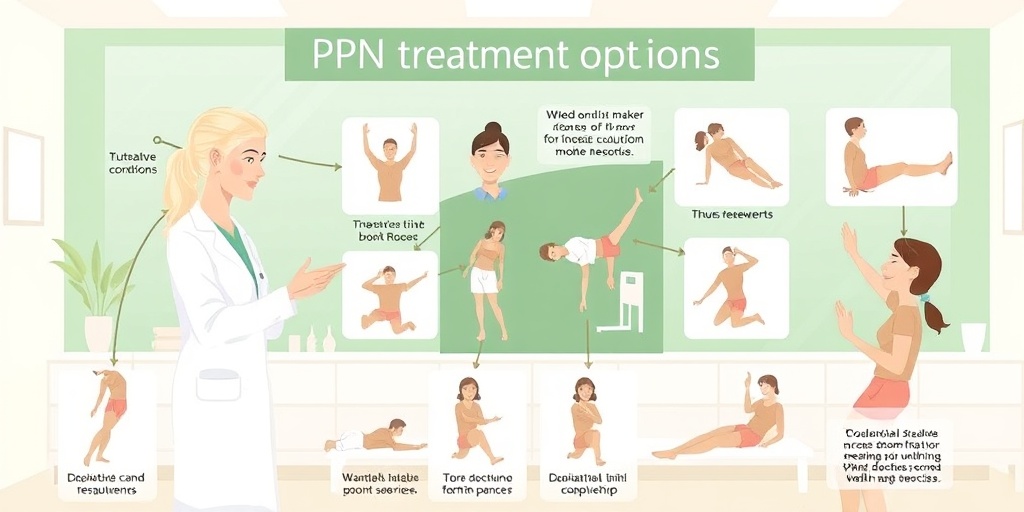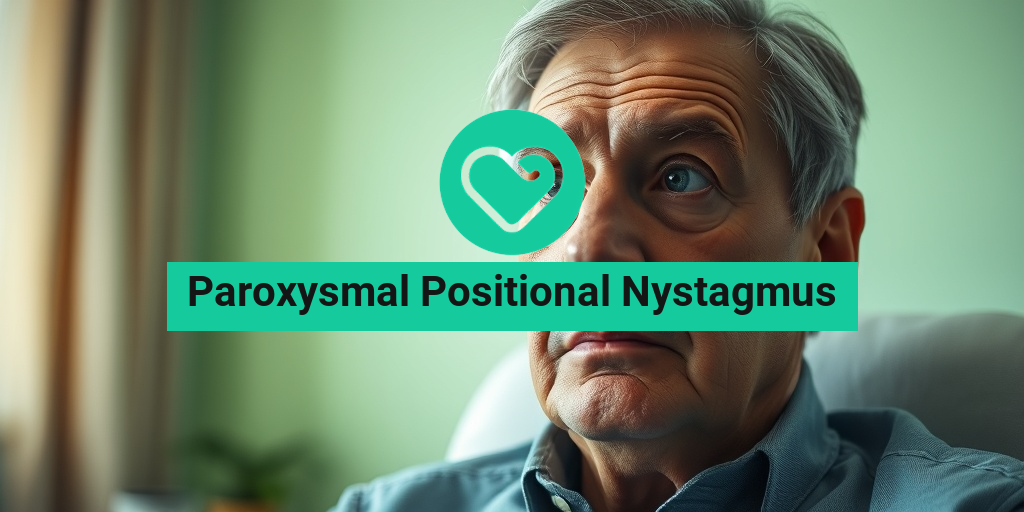What Is Paroxysmal Positional Nystagmus?
Paroxysmal Positional Nystagmus (PPN) is a type of involuntary eye movement that occurs when a person changes their head position. This condition is often associated with episodes of vertigo, which can be quite disorienting. PPN is classified as a form of benign paroxysmal positional vertigo (BPPV), a common vestibular disorder that affects balance and spatial orientation.
When someone with PPN moves their head in certain directions, they may experience a sudden onset of dizziness or a spinning sensation. This happens because the inner ear, which plays a crucial role in maintaining balance, sends conflicting signals to the brain about the body’s position. The result is a mismatch between what the eyes see and what the inner ear senses, leading to the characteristic symptoms of PPN.
Understanding the Mechanism Behind PPN
The inner ear contains tiny structures called otoliths, which are responsible for detecting changes in head position. In PPN, these otoliths can become dislodged and move into one of the semicircular canals of the inner ear. When the head is positioned in certain ways, these displaced otoliths can cause abnormal fluid movement, triggering the sensation of vertigo and the involuntary eye movements characteristic of nystagmus.
Types of Paroxysmal Positional Nystagmus
There are two main types of PPN:
- Benign Paroxysmal Positional Nystagmus (BPPN): This is the most common form and is typically triggered by specific head movements.
- Central Paroxysmal Positional Nystagmus: This type is less common and may be associated with neurological conditions affecting the brain.
Understanding the type of PPN is essential for effective treatment and management. If you suspect you have PPN, consulting a healthcare professional is crucial for an accurate diagnosis and appropriate care.
PPN Symptoms
The symptoms of Paroxysmal Positional Nystagmus can vary in intensity and duration, but they typically include:
- Dizziness or Vertigo: A spinning sensation that can be triggered by specific head movements, such as looking up or rolling over in bed.
- Nystagmus: Involuntary eye movements that may be horizontal, vertical, or rotational, often accompanying the episodes of dizziness.
- Balance Issues: Difficulty maintaining balance, especially when changing positions or moving quickly.
- Nausea: Some individuals may experience nausea or vomiting during episodes of vertigo.
- Lightheadedness: A feeling of faintness or unsteadiness that can occur during or after an episode.
Identifying Symptoms
It’s important to note that symptoms of PPN can be similar to those of other vestibular disorders. Therefore, if you experience any of these symptoms, it’s advisable to seek medical attention. A healthcare provider can perform specific tests to determine if PPN is the underlying cause of your symptoms.
When to Seek Help
If you experience recurrent episodes of dizziness or vertigo, especially if they interfere with your daily activities, it’s essential to consult a healthcare professional. They can provide a thorough evaluation and recommend appropriate treatment options. Resources like Yesil Health AI can also offer evidence-based health answers to help you understand your condition better.
In conclusion, Paroxysmal Positional Nystagmus is a manageable condition, and understanding its symptoms is the first step toward effective treatment. By recognizing the signs and seeking help, you can regain control over your balance and well-being. 🌟

Causes of Paroxysmal Positional Nystagmus
Paroxysmal Positional Nystagmus (PPN) is a type of nystagmus characterized by brief episodes of involuntary eye movements triggered by changes in head position. Understanding the causes of PPN is crucial for effective diagnosis and treatment. Here are some of the primary causes:
1. Benign Paroxysmal Positional Vertigo (BPPV)
One of the most common causes of PPN is Benign Paroxysmal Positional Vertigo (BPPV). This condition occurs when tiny calcium carbonate crystals in the inner ear become dislodged and move into the semicircular canals. When the head changes position, these crystals disrupt the normal fluid movement, leading to vertigo and nystagmus.
2. Inner Ear Disorders
Other inner ear disorders can also lead to PPN. Conditions such as Meniere’s disease or vestibular neuritis can affect the balance and spatial orientation systems in the inner ear, resulting in episodes of nystagmus.
3. Neurological Conditions
Neurological disorders can also be a cause of PPN. Conditions like multiple sclerosis or stroke can affect the brain’s ability to process signals from the inner ear, leading to abnormal eye movements. In these cases, PPN may be a symptom of a more serious underlying condition.
4. Head Trauma
Injuries to the head can disrupt the vestibular system, leading to PPN. A concussion or other forms of head trauma can cause changes in the inner ear or brain that result in positional nystagmus.
5. Aging
As individuals age, the risk of developing PPN increases. The vestibular system may become less efficient, and the likelihood of conditions like BPPV rises. This age-related decline can lead to more frequent episodes of nystagmus.
Risk Factors for Paroxysmal Positional Nystagmus
Identifying the risk factors associated with Paroxysmal Positional Nystagmus (PPN) can help in early diagnosis and management. Here are some key risk factors to consider:
1. Age
Age is a significant risk factor for PPN. Individuals over the age of 60 are more likely to experience episodes of nystagmus due to the natural degeneration of the vestibular system and an increased incidence of BPPV.
2. Previous Episodes of Vertigo
Those who have experienced vertigo in the past are at a higher risk for developing PPN. A history of BPPV or other vestibular disorders can predispose individuals to recurrent episodes of positional nystagmus.
3. Female Gender
Research indicates that women are more likely than men to develop PPN, particularly BPPV. Hormonal factors may play a role in this increased susceptibility.
4. Sedentary Lifestyle
A sedentary lifestyle can contribute to the development of PPN. Regular physical activity helps maintain vestibular function and balance. Lack of movement may increase the risk of inner ear disorders that lead to nystagmus.
5. Certain Medical Conditions
Individuals with certain medical conditions, such as diabetes or hypertension, may have a higher risk of developing PPN. These conditions can affect blood flow and nerve function, potentially impacting the vestibular system.
6. Head Injuries
As mentioned earlier, head trauma is a significant risk factor for PPN. Individuals who have suffered concussions or other head injuries may experience disruptions in their vestibular system, leading to episodes of nystagmus.
Understanding the causes and risk factors of Paroxysmal Positional Nystagmus is essential for effective management and treatment. If you or someone you know is experiencing symptoms of PPN, it is important to consult a healthcare professional for a thorough evaluation and appropriate care. 🩺

Diagnosing Paroxysmal Positional Nystagmus
Diagnosing Paroxysmal Positional Nystagmus (PPN) can be a complex process, as it often mimics other vestibular disorders. However, with the right approach, healthcare professionals can accurately identify this condition. Here’s how the diagnosis typically unfolds:
Initial Consultation
The first step in diagnosing PPN involves a thorough medical history and physical examination. During this consultation, your healthcare provider will ask about:
- Your symptoms: When do they occur? Are they triggered by specific movements?
- Duration and frequency of episodes: How long do the episodes last?
- Any previous medical conditions: Have you experienced any head injuries or other vestibular disorders?
Vestibular Testing
After the initial consultation, your doctor may recommend a series of vestibular tests to assess your balance and eye movements. These tests can include:
- Electronystagmography (ENG): This test measures eye movements to identify any abnormal patterns.
- Videonystagmography (VNG): Similar to ENG, but uses video technology to track eye movements.
- Head Impulse Test: This test evaluates how well your vestibular system responds to head movements.
Diagnostic Maneuvers
One of the hallmark features of PPN is that symptoms are often triggered by specific head positions. Your healthcare provider may perform diagnostic maneuvers, such as the Dix-Hallpike maneuver, to provoke symptoms and confirm the diagnosis. During this test, you will be positioned in a way that allows the doctor to observe your eye movements in response to changes in head position.
Imaging Studies
In some cases, imaging studies like an MRI or CT scan may be necessary to rule out other potential causes of your symptoms, such as tumors or structural abnormalities in the brain or inner ear.
PPN Treatment Options
Once diagnosed, the next step is to explore treatment options for Paroxysmal Positional Nystagmus. Fortunately, there are several effective strategies to manage this condition:
Canalith Repositioning Maneuvers
The most common treatment for PPN is the use of canalith repositioning maneuvers, such as the Epley maneuver. This technique involves a series of specific head and body movements designed to move the displaced calcium crystals (otoconia) back to their proper location in the inner ear. This can significantly reduce or eliminate symptoms for many patients.
Vestibular Rehabilitation Therapy (VRT)
For individuals who continue to experience symptoms despite repositioning maneuvers, Vestibular Rehabilitation Therapy (VRT) may be recommended. VRT is a specialized form of physical therapy that focuses on improving balance and reducing dizziness through tailored exercises. These exercises help the brain adapt to changes in the vestibular system, ultimately enhancing stability and reducing symptoms.
Medications
In some cases, medications may be prescribed to help manage symptoms associated with PPN. These can include:
- Antihistamines: Such as meclizine, which can help alleviate dizziness.
- Anticholinergics: These medications can also help reduce vertigo symptoms.
Education and Lifestyle Modifications
Understanding your condition is crucial in managing PPN. Your healthcare provider may recommend lifestyle modifications to help minimize symptoms. These can include:
- Avoiding sudden head movements or positions that trigger symptoms.
- Staying hydrated and maintaining a healthy diet.
- Engaging in regular physical activity to improve overall balance and coordination.
By combining these treatment options, many individuals with Paroxysmal Positional Nystagmus can find relief from their symptoms and improve their quality of life. Remember, it’s essential to work closely with your healthcare provider to determine the best approach tailored to your specific needs. 🌟

Home Remedies for Paroxysmal Positional Nystagmus
Paroxysmal Positional Nystagmus (PPN) can be a challenging condition to manage, but there are several home remedies that may help alleviate symptoms. These remedies focus on lifestyle adjustments and natural treatments that can provide relief from the discomfort associated with PPN.
1. Epley Maneuver
The Epley Maneuver is a well-known technique used to treat benign paroxysmal positional nystagmus (BPPV), a common form of PPN. This maneuver involves a series of head movements designed to reposition the tiny crystals in the inner ear that cause vertigo. Here’s how to perform it:
- Start by sitting on a bed and turning your head 45 degrees to the side that triggers your symptoms.
- Quickly lie back on the bed, keeping your head turned, and hold this position for about 30 seconds.
- Next, turn your head 90 degrees to the opposite side without lifting it, and hold for another 30 seconds.
- Finally, roll onto your side in the direction you are facing and hold for 30 seconds.
Repeat this process a few times a day until symptoms improve. Always consult with a healthcare professional before attempting this maneuver to ensure it’s appropriate for your situation.
2. Ginger Tea
Ginger is known for its anti-nausea properties and can be beneficial for those experiencing dizziness and vertigo associated with PPN. Drinking ginger tea can help soothe your stomach and reduce feelings of nausea. To make ginger tea:
- Boil a cup of water and add a few slices of fresh ginger.
- Let it steep for about 10 minutes, then strain and enjoy.
Consider adding honey or lemon for added flavor and benefits! 🍵
3. Stay Hydrated
Dehydration can exacerbate symptoms of PPN. Ensure you drink plenty of water throughout the day. Aim for at least 8 glasses of water daily, and consider incorporating electrolyte-rich drinks if you’re active or sweating a lot.
4. Balance Exercises
Engaging in balance exercises can help improve your stability and reduce the frequency of PPN episodes. Simple exercises include:
- Standing on one leg for 10-15 seconds.
- Walking heel-to-toe in a straight line.
- Practicing tai chi or yoga for improved balance and coordination.
These exercises can help retrain your brain to better process balance signals, potentially reducing the impact of PPN.
5. Avoid Triggers
Identifying and avoiding triggers is crucial in managing PPN. Common triggers may include:
- Rapid head movements
- Looking up or down quickly
- Sudden changes in position
Keeping a diary of your symptoms and activities can help you pinpoint specific triggers, allowing you to modify your behavior accordingly.
Living with Paroxysmal Positional Nystagmus
Living with Paroxysmal Positional Nystagmus (PPN) can be daunting, but understanding the condition and implementing effective coping strategies can significantly improve your quality of life.
Understanding Your Condition
First and foremost, it’s essential to educate yourself about PPN. Knowing that it is often benign and can be managed with appropriate techniques can alleviate anxiety. Remember, PPN is characterized by brief episodes of vertigo triggered by specific head positions, and while it can be uncomfortable, it is usually not a sign of a more serious condition.
Communicate with Your Healthcare Provider
Regular communication with your healthcare provider is vital. Discuss your symptoms, treatment options, and any concerns you may have. They can provide personalized advice and may suggest physical therapy or vestibular rehabilitation exercises tailored to your needs.
Support Systems
Connecting with others who experience PPN can be incredibly beneficial. Consider joining support groups or online forums where you can share experiences, tips, and encouragement. This sense of community can help you feel less isolated and more empowered in managing your condition. 🤝
Mindfulness and Stress Management
Stress can exacerbate symptoms of PPN, so incorporating mindfulness practices such as meditation, deep breathing exercises, or gentle yoga can be helpful. These practices not only promote relaxation but also improve your overall well-being.
Maintain a Healthy Lifestyle
Lastly, maintaining a healthy lifestyle can have a positive impact on your symptoms. Focus on:
- Eating a balanced diet rich in fruits, vegetables, whole grains, and lean proteins.
- Engaging in regular physical activity to enhance overall health and balance.
- Getting adequate sleep to support your body’s recovery and resilience.
By taking proactive steps and adopting a holistic approach, you can effectively manage Paroxysmal Positional Nystagmus and lead a fulfilling life. 🌟

Frequently Asked Questions about Paroxysmal Positional Nystagmus
What is Paroxysmal Positional Nystagmus?
Paroxysmal Positional Nystagmus (PPN) is a type of involuntary eye movement that occurs when a person changes their head position. It is often associated with dizziness and can be triggered by specific movements, such as tilting the head or lying down.
What causes Benign Paroxysmal Positional Nystagmus?
Benign Paroxysmal Positional Nystagmus (BPPN) is typically caused by tiny calcium crystals in the inner ear that become dislodged and affect balance. This condition is often benign and can resolve on its own, but it may require treatment in some cases.
What are the symptoms of Paroxysmal Positional Vertigo Nystagmus?
- Dizziness or a spinning sensation (vertigo)
- Loss of balance
- Nausea
- Visual disturbances
These symptoms usually occur when changing head positions and can last for a few seconds to minutes.
How is Paroxysmal Positional Nystagmus diagnosed?
Diagnosis typically involves a physical examination and a series of tests conducted by a healthcare professional. These may include the Dix-Hallpike maneuver to observe eye movements and determine the presence of nystagmus.
What is the treatment for Central Paroxysmal Positional Nystagmus?
Treatment for Central Paroxysmal Positional Nystagmus may vary based on the underlying cause. Options can include vestibular rehabilitation therapy, medications, or in some cases, surgery. It is essential to consult a healthcare provider for a tailored treatment plan.
Can Paroxysmal Positional Nystagmus be prevented?
While it may not be possible to prevent Paroxysmal Positional Nystagmus, avoiding sudden head movements and maintaining good ear health can help reduce the risk of developing symptoms.
Is there a link between Paroxysmal Positional Nystagmus and other conditions?
Yes, Paroxysmal Positional Nystagmus can be associated with other vestibular disorders, neurological conditions, or inner ear issues. It is crucial to discuss any concerns with a healthcare professional for proper evaluation.
When should I see a doctor for Paroxysmal Positional Nystagmus?
If you experience frequent episodes of dizziness, vertigo, or any other concerning symptoms, it is advisable to consult a healthcare provider. Early diagnosis and treatment can help manage the condition effectively.




